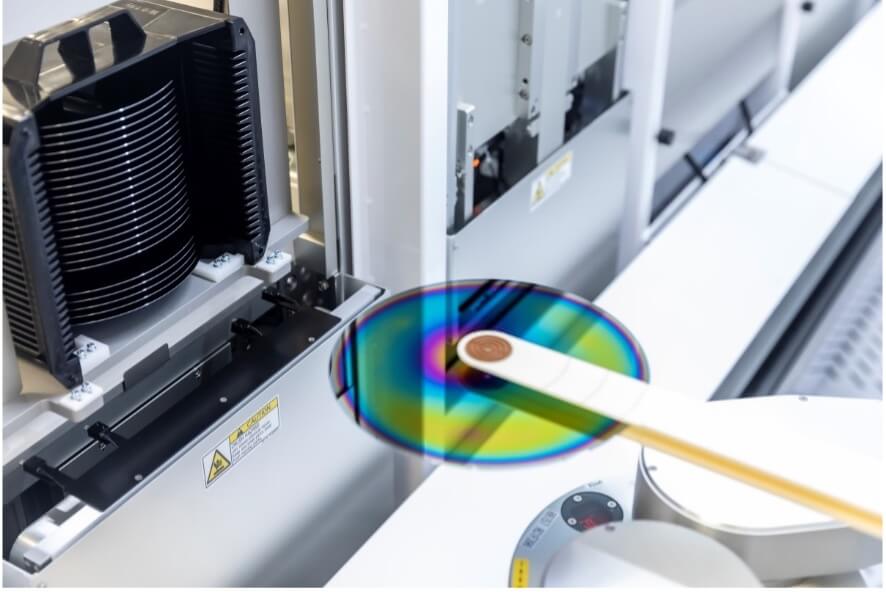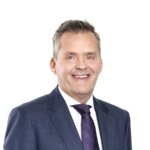As the company boasts some of the most advanced plasma equipment in the industry, CCO Peter Dijkstra discusses how Trymax Semiconductor Equipment B.V. (Trymax) has achieved this unique position.
Amongst many titans of the semiconductor manufacturing industry in the Netherlands, Trymax Semiconductor Equipment B.V. (Trymax) is the company of choice for the design, manufacture, and marketing of plasma-based processing and equipment solutions. Trymax was first founded in 2003, and our name stands as a re-lettering of the Matrix plasma asher machines that are widely regarded in the industry.
Our mission was clear: to provide service and support for European customers who depended on Matrix-like machines. As time went on, we faced new challenges. Between 2007 and 2009, we realized that the aging Matrix machines had exceeded their serviceability limits, prompting us to start manufacturing our own equipment.
This signified a major transformation, as we shifted from a service-orientated provider to a cutting-edge manufacturer. This strategic move allowed us to adapt to the evolving semiconductor landscape and stay at the forefront of technological advancements.
Precision Plasma Performance
Our headquarters, situated in Nijmegen, has a total capacity of 4,200 square meters (m2), which includes a manufacturing cleanroom, a state-of-the-art demo lab, an engineering and manufacturing area, and a logistics and storage and technical area, with an equipment build capacity of up to 250 toolsets per year.
Situated within the wider network of semiconductor manufacturing facilities, we are proud to be part of the European semiconductor equipment cluster with a strong supply chain. This position is bolstered by the fact that we do all our final assembly and testing in-house, ensuring streamlined operations and maximum efficiency in all of our products.
Our service offering entails diligent plasma solutions in ashing, descumming, etching, surface preparation, ultraviolet (UV) curing, and charge erasure. To achieve this, we provide an industry-leading product line known as NEO, which is designed to address a wide range of applications throughout the semiconductor manufacturing process.
All platforms found in each NEO can handle two or more substrate types and sizes simultaneously without any hardware changes. Furthermore, each product supports all types of substrate handling, catering to substrate sizes from 77 millimeters (mm) up to 330mm, with a focus on 150mm, 200mm, and 300mm. Further features include platform flexibility with five different process modules, alongside a detailed system configuration based on the application specification budget.
With a global network of processing chambers, we credit our success to the precision of our NEO products, which sets us apart by our ability to process two different wafer sizes simultaneously. This feature proves particularly valuable in a transitioning market, such as the LED industry, in which our machines can process wafer sizes from 150mm to 200mm, outrunning older machines that need extensive modifications to accommodate new wafer diameters.
By accommodating varying wafer sizes, our machines mitigate the risks associated with equipment reconfiguration. They automatically recognize the wafer size and handle it seamlessly, streamlining production processes and enhancing efficiency.
Additionally, the tools’ sophisticated robot arm can be equipped with several specialized substrate gripping tools, designed for a diverse range of uses.
Contributing to a Better World
Correlating with the technical innovations of our company, we participate in a multitude of projects that facilitate a better and more sustainable future. Projects like SMART Photonics, for example, allow a much higher data exchange rate by using optical communication. This offers a vital aid to hospitals, providing significantly important components to a vast range of medical equipment.
Additionally, the power management integrated circuits (ICs) in each NEO have been redesigned to replace silicon with silicon carbide (SiC). Industry research suggests that shifting from silicon to SiC for power applications will help eliminate the need for 880 nuclear power plants worldwide, making a huge impact.
Our logistics supply chain is essential for streamlined operations. We work very closely with all our suppliers to make sure we receive all components and materials on time. This results in shorter lead times. For example, during the COVID-19 pandemic, a major German customer ordered several ashing tools. We didn’t think we’d be able to supply all the tools on time, due to missing an essential component from a German company. Our customer intervened by purchasing the missing component. That allowed us to reduce the delayed shipping time.
Quality and Quantity
As the year continues, we are focusing on increasing our market share in the manufacturing industry. As the semiconductor sector expands its capabilities, including new UV curing technology, we have much to look forward to in being a proactive part of the industry shift. The NEO 2000UV tool, an advanced UV curing and charge erasure system, utilizes a single UV bulb. The new equipment acts as a bridge tool for two-wafer diameters and is specifically designed for applications from three to eight-inch substrates, enabling greater accuracy.
Consequently, we are being recognized by many major automotive suppliers to the German, Korean, USA and Japanese car industry. We’re currently number one in Europe and number two in China. Additionally, we recently opened a sales and service office in the USA. Our goal is to increase sales, without losing quality performance and innovation.





















